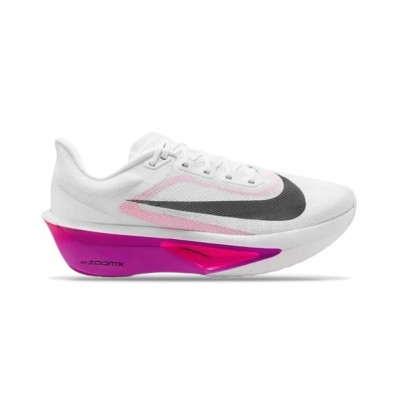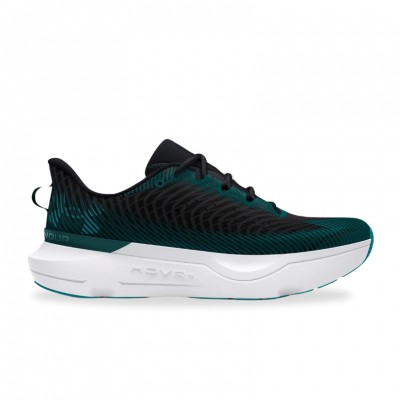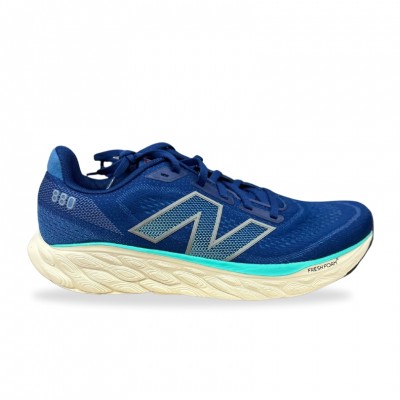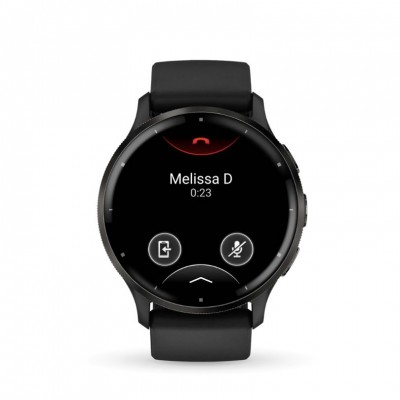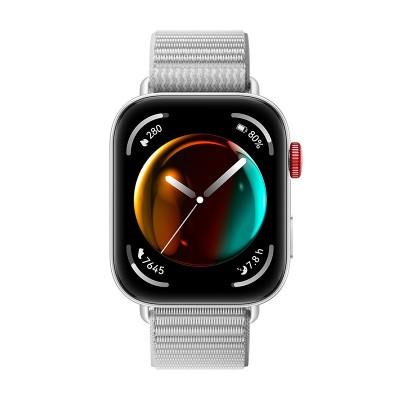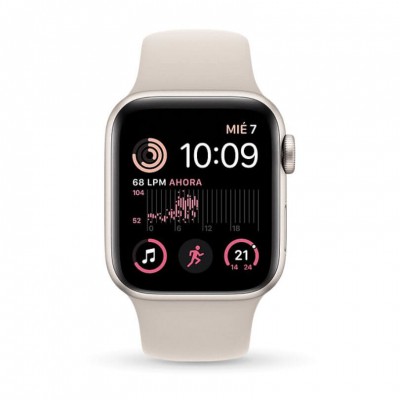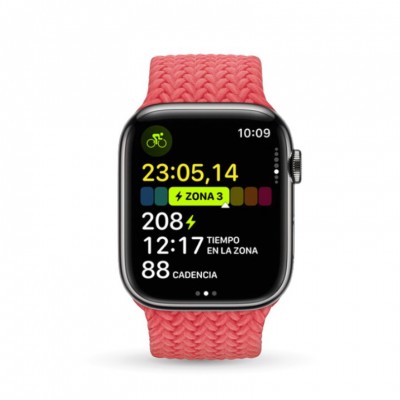Choosing the perfect running shoes is not easy. In fact, making the wrong choice of footwear can lead to a bad experience and from there to lose your motivation to start running. At RUNNEA, we understand that every runner has his or her own needs. That's why we've brought together several of our experts to offer you a comprehensive, science-backed guide to help you make the best decision. From understanding your footprint type to knowing which elements are decisive in order not to fail with your choice of footwear based on your needs or goals. We'll walk you every step of the way to choosing your ideal running shoes. Get ready to discover how the right pair can make your runs not only more efficient, but also more enjoyable and safer.
Not sure which shoe to choose?
In a few simple steps we help you to choose the ideal running shoe for you.
GO TO THE RECOMMENDER
Understanding your stride type
The first thing we need to know is the way your foot touches the ground while running to determine your stride type. According to different biomechanical studies, the footprint can be classified into three categories: pronator, supinator and neutral.
Pronator: To make it easy to understand, the foot turns inward. It is common in many runners and is not necessarily a negative thing, but overpronation can cause problems if you don't wear the right shoes. You need shoes with extra support to correct the excess rotation and better distribute the impact. Jokin Angulo, product tester at RUNNEA, explains, "Pronation is common and natural, but an overpronation needs additional support to avoid long-term injury."
Supinator: Here, the foot rolls outward. It is less common and can lead to poor shock absorption. shoes with forefoot cushioning and flexibility are generally the most suitable. Lionel Nattes, ultra distance runner and internationalization director at RUNNEA, comments, "Supination is less common and requires shoes with more cushioning in the forefoot to better absorb shock."
Neutral: The foot stays aligned without significant rollover. This type is the most versatile and allows for a greater variety of shoe options, but always requires some support. Gorka Sedano, editor-in-chief of RUNNEA, notes, "Neutral shoes are the most versatile and allow for the greatest variety of options on the market."
How to identify your stride type
To determine your footprint type, you can choose to have an analysis done at a foot clinic or a specialty store. A tip that is not a determining factor but can give you a clue as to your footprint type is to observe the wear of your current running shoes: if they are worn more on the inside, you are a pronator; if the wear is on the outside, you are a supinator.
Measure your foot correctly before buying a shoe.
Keep in mind that the size of your running shoe may vary depending on the brand and model of shoe. What does not vary is the size of your foot. That's why it's essential to measure it every time you go shopping for new shoes. Follow these steps:
- Place a sheet of paper on the floor and rest your foot on top of it, with your heel on the edge. Make sure that the foot is fully supported and that it is neither too flexed nor too stretched.
- Mark the tip of your longest toe with a pencil. Note that this is not always the big toe.
- Measure the distance between the heel and the mark. Add 1 cm or a centimeter and a half to give you room at the toe to prevent your toes from bumping into it on impact.
Remember that your foot can grow up to half a number more in the afternoon or after running, when the blood vessels are dilated and blood accumulates in the extremities. That's why it's important to always measure your foot at the same time of day and in the same conditions. Always buy with that slack to prevent your toes from bumping into the toe box.
Also keep in mind that feet can be different sizes. Measure both and buy the shoe according to the larger foot. Knowing how many centimeters your foot measures is the best way not to get it wrong with the size. All brands offer the size of the shoes in centimeters as well.
The importance of cushioning when choosing running shoe
Cushioning in running shoes is essential to protect your joints and muscles from the repetitive impact of running. Without proper cushioning, impact forces can create a number of biomechanical problems, increasing the risk of injury and negatively affecting performance.

Scientific evidence
A study in the "Journal of Sports Sciences" showed that shoes with adequate cushioning can reduce impact forces by up to 30%, which is essential for protecting the knees and spine. In addition, the "American Journal of Sports Medicine" highlights that good cushioning not only helps prevent injuries, but also improves the runner's efficiency by providing a more stable platform and better energy return with each stride.
Impact on performance
Proper cushioning not only protects against injury, but can also improve a runner's performance. A study in "Sports Medicine" found that shoes with optimized cushioning can improve running efficiency by providing better energy return in each stride. Raul Lozano adds, "For long-distance runners, good cushioning not only prevents injury, but also allows them to maintain a steady pace and reduce fatigue." It is very important for those looking to improve their times and prolong their sporting life."
What is the right cushioning?
It's a very common question we get asked at RUNNEA, but it's a difficult one to answer. It depends on many factors. But the first factor we usually recommend keeping in mind is the degree of comfort you are looking for. It is not the same to run with a shoe with maximum cushioning and a soft feeling in each stride, than to run with a minimalist shoe and firmer cushioning. That's why we like to recommend starting with the intended use of the shoe:
- I run for fitness or to clear my head: Our recommendation is to go for shoes with maximum cushioning, soft running feel and good foot fit.
- I run to compete and improve my performance over medium and long distances: As a general rule, a shoe with a good balance between reactivity and foot protection.
- I run to compete and to improve my performance over short distances: Very reactive shoes, light but with good foot support.
Fit and comfort
The right fit is essential not only to avoid injury but also to improve your performance. According to studies in the British Journal of Sports Medicine, a poor fit can lead to problems such as blisters, black toenails or muscle injuries.
- Toe space: Leave approximately one centimeter of space to allow for expansion of the foot during running.
- Heel support: The heel should fit snugly but without causing discomfort. This is one of the keys when choosing whether a shoe is for you or not. The heel should not move and there should be no looseness in that area of the foot.
- Proper width: shoes should not be too tight or too loose. I particularly like the toe area to be more free, but the heel to be very well adjusted. Raul Lozano, trail running coach and captain of the RUNNEA TRAIL Team, adds, "In trail running, a good fit is especially important because of the uneven terrain."
Flexibility and stability.
There is one rule I like to repeat to everyone who asks me for advice when buying a running shoe: shoes should be flexible in the forefoot and stable in the heel. The American Academy of Orthopaedic Surgeons suggests that lack of flexibility or stability can contribute to common injuries such as plantar fasciitis and ankle sprains.
And how important is shoe weight?
Surely for most popular runners, weight is not as important as the brands make it seem. But if you are looking for maximum performance, the weight of the shoe does have an influence. In this case, it influences your speed and efficiency. According to the Journal of Sports Medicine, each additional 100 grams increases energy expenditure by 1%. 1% for a popular runner who runs 10km 3 days a week to keep fit has practically no impact. So don't get hung up on the weight of the shoe if this is your case.
If, on the other hand, you are looking for performance, weight is more important. But don't get obsessed. Look for a better balance between weight, support and reactivity. In the long run you will be grateful for it.

Choice of brand and model
Choosing the brand and model is very complicated, we're not going to fool you. There is a lot of social pressure, brands spend millions on marketing to promote their models. But we at RUNNEA are here to help you. You can try our running shoes recommender. We will guide you in choosing the shoes that best suit your conditions and needs. Think that nowadays practically all the recognized brands in the sector have a specific type of running shoe for the different needs of the runner.
Not sure which shoe to choose?
In a few simple steps we help you to choose the ideal running shoe for you.
GO TO THE RECOMMENDERType of surface
As usual, the type of running and the surface on which you run are decisive in choosing your shoes. Many times you ask us about shoes that can be used for everything, both asphalt and trail, and although brands have launched hybrid models that allow you to run on asphalt and dirt or small loose stone tracks, the reality is that the ideal is to have a shoe for each terrain:
- Asphalt: they require good cushioning and support.
- Trail running: Need more traction and stability.
- Track: Very light and responsive models.
Foot structure and body weight
The structure of your feet and your body weight are also factors to consider. It may seem like a no-brainer but heavier runners will generally need more cushioning, while those with wider feet may require models with more room in the toe box or even special models with a wider toe box. Brands such as Nike or New Balance have specific models for wide feet.

Additional considerations
- Breathability: Opt for shoes with good ventilation to keep your feet cool and dry.
- Drop: The difference in height between the heel and toe (drop) can affect your running technique. A higher drop (8 to 12 mm) is recommended for runners who land on their heel. Generally with a less efficient running technique. However, if you have a good running technique, it is still recommended that you opt for drops below 8 mm to land midfoot and achieve greater efficiency in your stride.
Budget
A word of advice: price does not always reflect quality. You can find suitable shoes at reasonable prices. Amaia Cabezudo assures, "Sometimes, the best shoes for you are not the most expensive ones on the market." That's also why RUNNEA was born, to find those models that are within your budget. The average price of a shoe with a very good quality and good performance is around 100€. Obviously you can find better prices (check our outlet or our bargain search engine), but this is just to give you an average point of reference.
Consult with experts
And one last tip, whenever you have doubts, always consult with experts, whether podiatrists, trainers, specialists in running stores or ourselves in our doubts consulting room. Raul Lozano suggests, "We can help you based on our real-world experience with personalized recommendations based on your specific needs."
Read more news about: Running News







